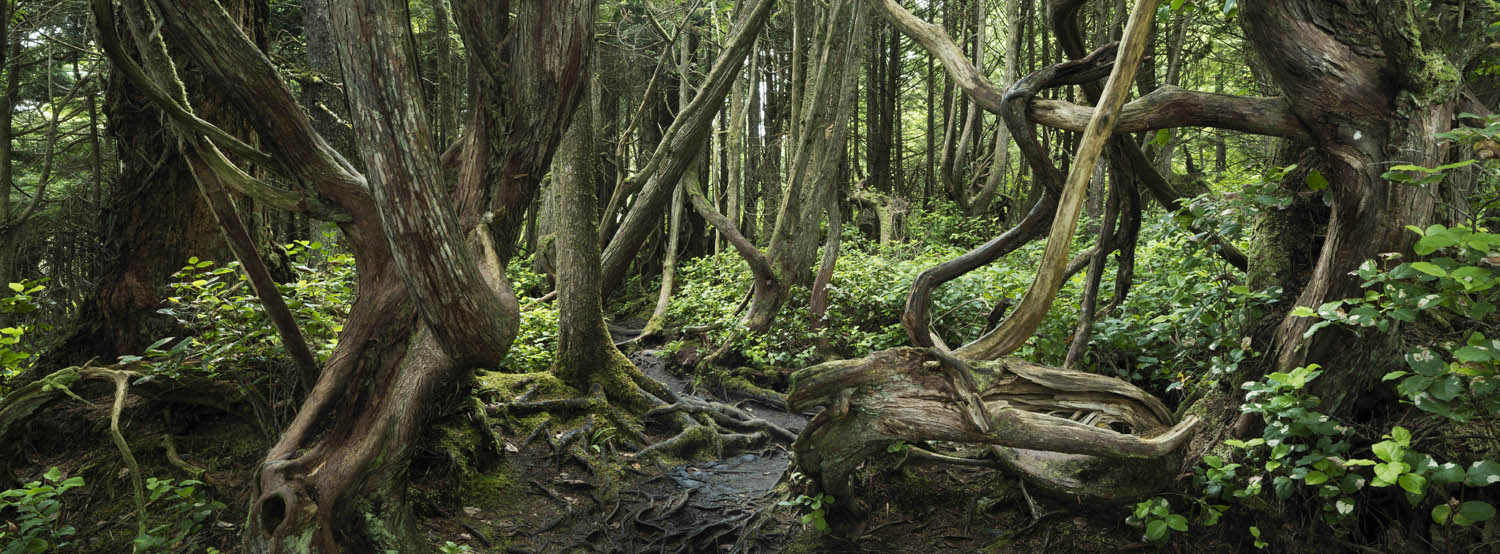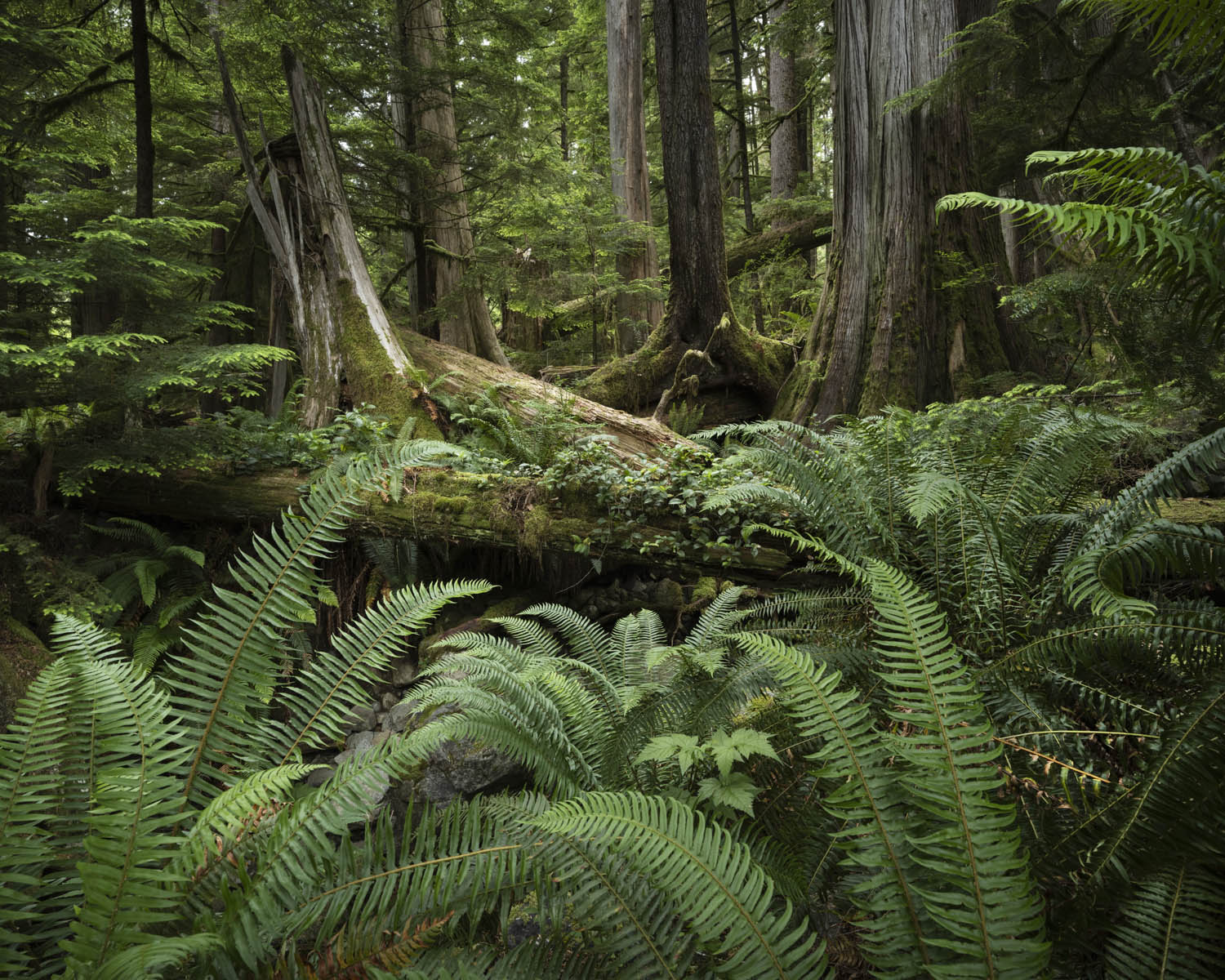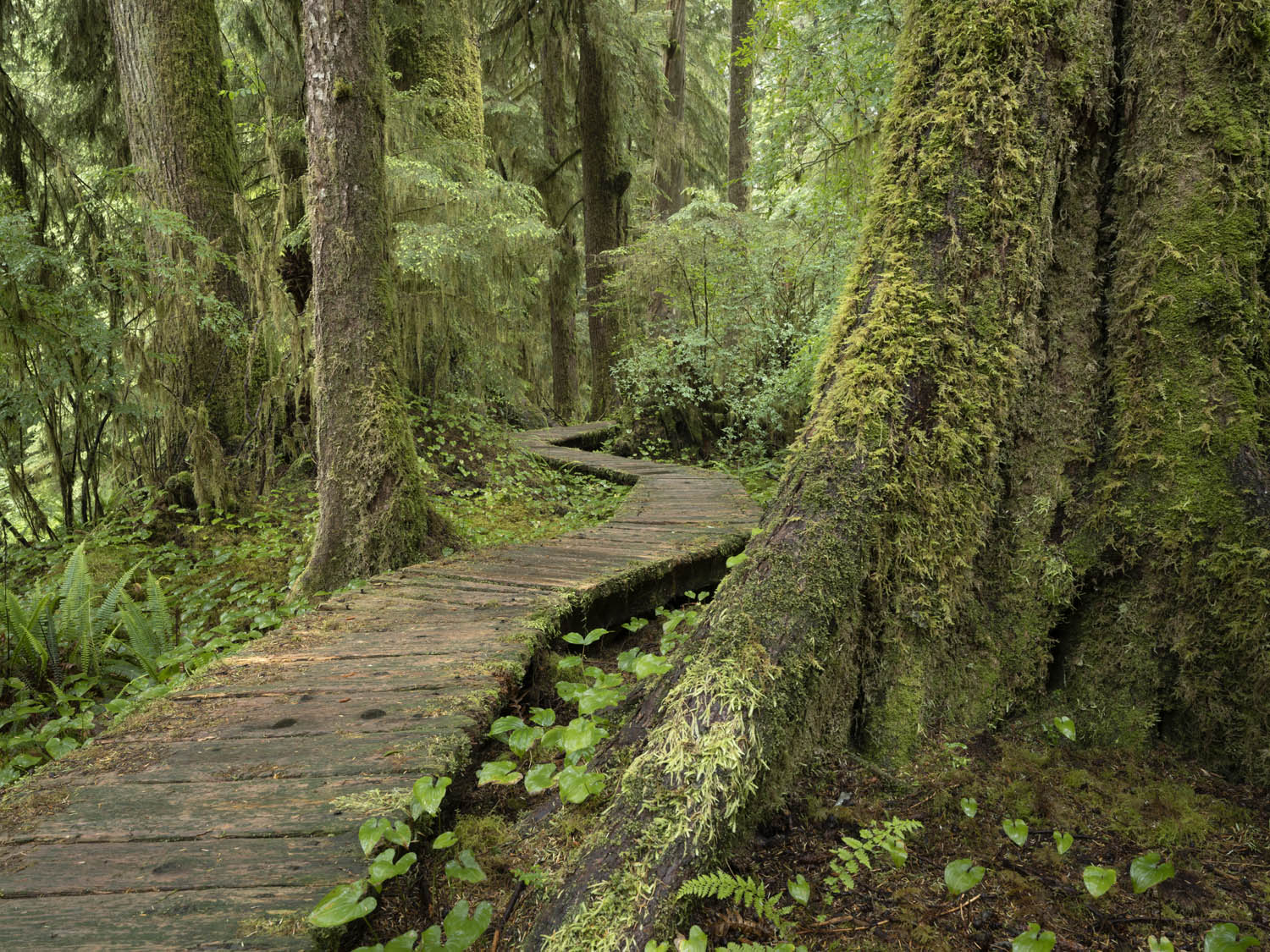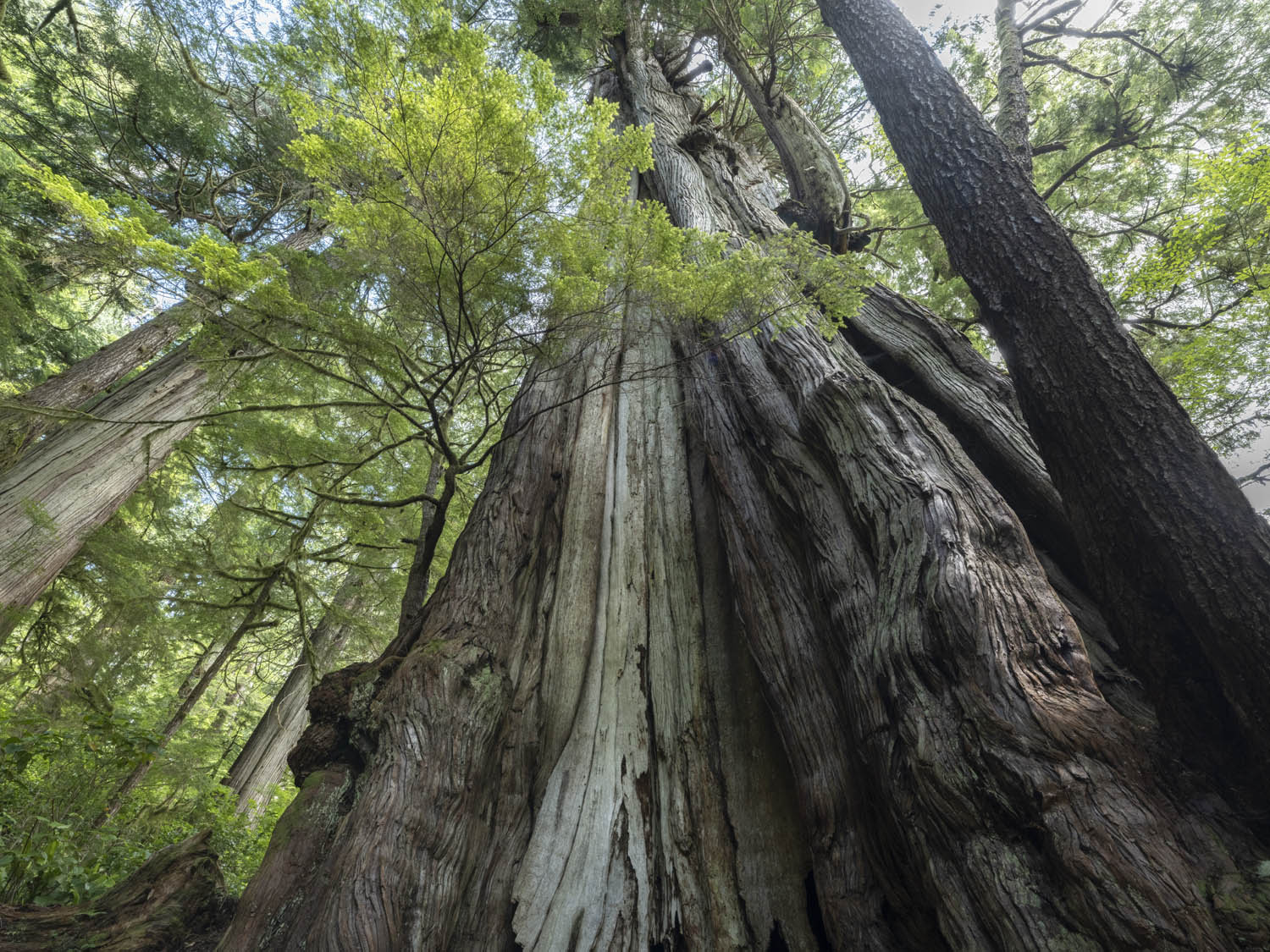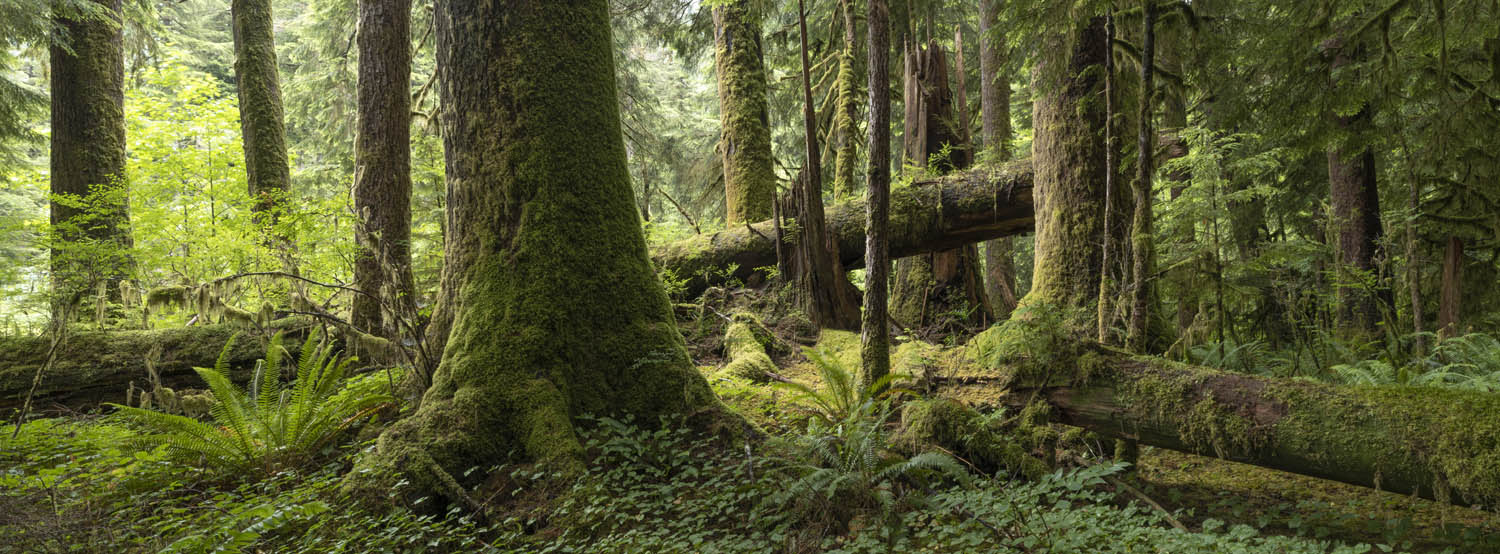When you think of Canada, what iconic images first come to mind? The grandeur of the Canadian Rockies? The big skies of the prairies? Or perhaps the immense force of Niagara falls? These are the icons I first thought of before moving to Canada back in 1979. Did you know, though, that Canada, more specifically the west coast of Canada, is home to some of the most bio-diversified temperate rainforests in the world? The west coast of British Columbia also has some of the oldest and largest trees in North America. And on the west coast of Vancouver Island, these trees are all part of a complex ecosystem that nurtures their immediate and surrounding landscape, including salmon-bearing streams, rivers and the surrounding ocean. Temperate old-growth forests are a complex web of life forms that facilitate and contribute to a healthy environment.
In 2020 I decided to put together a personal project where I would explore some of the last remaining old-growth forests, primarily located on Vancouver Island’s west coast, to document some of the complexities of these rainforests.
The project has been fascinating, challenging and, in many ways, disheartening. Fascinating because I have discovered so much about the complexities within the rainforest that I didn’t know before. These same forests are challenging to photograph due to these complexities. By their very nature, rainforests are a mass of utter confusion and chaos; simplifying any composition is difficult at best. Finally, disheartening because there is minimal old-growth left in British Columbia, most of it logged within the last one hundred and fifty years.
Details and colour nuances within the landscape are essential, especially the intricate details of old-growth forests, so for this project, I have been using the FUJIFILM GFX100S camera. I’ve been using the GFX system for a few years now. Starting first with the GFX 50R and then migrating to the GFX100 and finally the GFX100S. The GFX system is a joy to use, and the quality of the GF lenses is exceptional.
One of the problems I’m constantly fighting is the weight of my gear. I’m not getting any younger, and since I work primarily independently, it’s not uncommon for me to carry 50lbs of equipment. With this in mind, I was pleased to get my hands on the new FUJINON GF20-35mm f/4 lens. Not only does the lens cover more range than the previous 23mm prime lens, but it is also lighter. My previous lens lineup was a 23mm f/4, 32-64mm f/4, 45-100mm f/4 and 100-200mm f/5.6, but now I can eliminate the 23mm and the 32-64mm and swap them out for the 20-35mm, shredding some weight from my camera pack.
Having a new piece of equipment is always a thrill, and of course, one of the first things in order is to test it out for sharpness and ease of use. Not surprisingly, the FUJINON 20-35mm is sharp from corner to corner at its widest focal length up to its most extended length. Another nice feature is the close focusing distance from the subject. We don’t often associate using a wide-angle lens for close-up work, but in some situations, when I’m in a tight spot, I’ll reach for a wide lens so that I can get close but still get everything in the frame with the wider angle of view.
In years past, wide-angle zoom lenses for medium format cameras have been limited to primarily prime lenses. Being a welcome addition to the GFX line of cameras, the GF20-35mm is roughly the equivalent length as a 16-28mm on a full-frame sensor. So, for most shooting conditions with a medium format camera, especially in the landscape, GF20-35mm is a welcome addition. But how does it perform in a woodland setting like the old-growth forests of British Columbia? At first, I was apprehensive about what I could achieve with a wide-angle lens in the woods.
I wouldn’t say I dislike using wide angles in woodland settings. But, I would often limit their use to compositions with less chaos because including more is counterproductive in simplifying a scene. If I’m trying to simplify a composition, I usually reach for a lens such as the FUJINON GF32-64mm or the GF100-200mm, where I can zoom in a little to reduce clutter. However, I was up for a challenge and, at the same time, thought that perhaps a broader view of the woods would give me a chance to portray my subjects with a different approach.
One evident approach to a woodland setting was to think of these scenes as grand landscapes. For my landscape work, I often use a wide-angle lens and look for a solid foreground to draw the viewer into the background. This approach is familiar to many landscape photographers and has been used since the dawn of landscape photography. A strong foreground acts as a solid bridge from foreground interest to the distant background. Wide-angle lenses also tend to exaggerate the foreground, creating drama, especially when you’re very close to it.
For this series of forest photographs, I used the same approach as I would the landscape, using ferns primarily as a foreground to pave the way for the rest of the scene. One of the inherent problems of using a wide-angle lens is the angle of view. Wide angles include a lot of stuff, so I will scrutinise a busy scene for some time, simplifying as much as possible and only having what is essential to my composition before pressing the shutter. Ultimately, I found that the most successful images using this approach tend to be the ones that have a foreground that relates well to the rest of the scene. After all, a dominant foreground has to be a solid entrance to the rest of the scene; otherwise, the image will probably fall apart.
Another aspect of the GFX system that I wasn’t expecting is my constant use of the in- camera cropping tool. The ability to see a cropped format within the camera while setting up a shot has been an excellent addition for me. In the past, I would often shoot multiple images and later stitch them together in Lightroom. The task is easy, but I find that with 102mp to play with, there is no need to take multiple photographs. If I want to grab a pano of a scene, I’ll switch to a 65 x 24 or 16×9 crop, and I can get the image in one shot. With the addition of the FUJINON GF20-35mm, I take more panoramic photos than ever. Panos seem to suit the woodland landscape well.
I was sad to send back the FUJINON GF20-35mm. The lens opens up some more creative choices for me, and as soon as I can get my hands on one, I will add it to my kit.















































